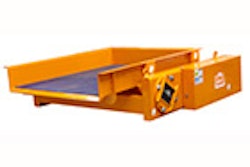This article previously appeared in IMPO's November/December 2013 issue.
Brenda Nader serves as senior product supply manager at Kimberly-Clark Professional, located in Roswell, GA, which is a leading provider of hygiene, safety, and productivity solutions. As a safety company, manufacturing companies rely on KCP for safety products that help protect both their employees and the environments they work in. Brenda brings more than 20 years of leadership in environmental, health and safety management, with particular expertise in cross-functional team building, safety management, organizational effectiveness, and lean manufacturing. She is responsible for helping to drive the continuous improvement efforts of the company’s North America mills.
Q: Can you describe the impact of hand injuries on the manufacturing industry?
A: While protecting the overall health and well-being of employees should be an employer’s paramount concern, special attention must be paid to preventing hand and finger injuries, which are second only to back strains and sprains in lost work days, according to the U.S. Bureau of Labor Statistics (BLS). Some studies show that nearly 20 percent of workplace injuries involve cuts and lacerations to the hand and fingers.
Not only are there an estimated 110,000 lost time hand injuries annually, but hand injuries send more than one million workers to the emergency room each year. In addition to the physical harm that hand injuries pose to workers, they also have financial implications. The average hand injury claim has now exceeded $6,000, with each lost time workers compensation claim reaching nearly $7,500, according to the BLS and the National Safety Council.
Q: How can a manufacturer best identify the risks and hazards in their facility?
A: Look to identify trends or patterns related to incidents of hand injuries in your own facilities. A trend analysis should be based on a combination of lagging (reactive) and leading (proactive) performance indicators. For example, a facility could measure the number of reportable hand injuries (lagging), while also measuring the reduction of risks associated with the hazards that contribute to hand injuries (leading). The analysis of these trends enables facility management to gain a better understanding of the types of hand injuries employees are experiencing and what behaviors or work tasks may be leading to those injuries.
Based on the findings of the trend analysis, facilities should be able to identify potential sources of hand injury hazards. Facilities should then take a systematic approach to a formal hand hazard assessment through a job-hazard analysis to ensure that every potential risk and hazard is being monitored, measured, and mitigated. A job-hazard analysis is a technique that focuses on job tasks as a way to identify hazards before they occur. It focuses on the relationship between the worker, the task, the tools, and the work environment. Once a risk has been identified, this analysis should be used to evaluate the risk based on severity, frequency, and probability of occurrence. This component is critical to reducing hand injuries as it identifies uncontrolled hazards and allows for the implementation of procedures to eliminate or mitigate the potential of risk exposures.
Maintaining compliance is critical when working to reduce hand injuries. Periodic audits should be conducted to evaluate the effectiveness of current hand protection strategies and policies, as well as to adjust hand protection requirements as needed.























